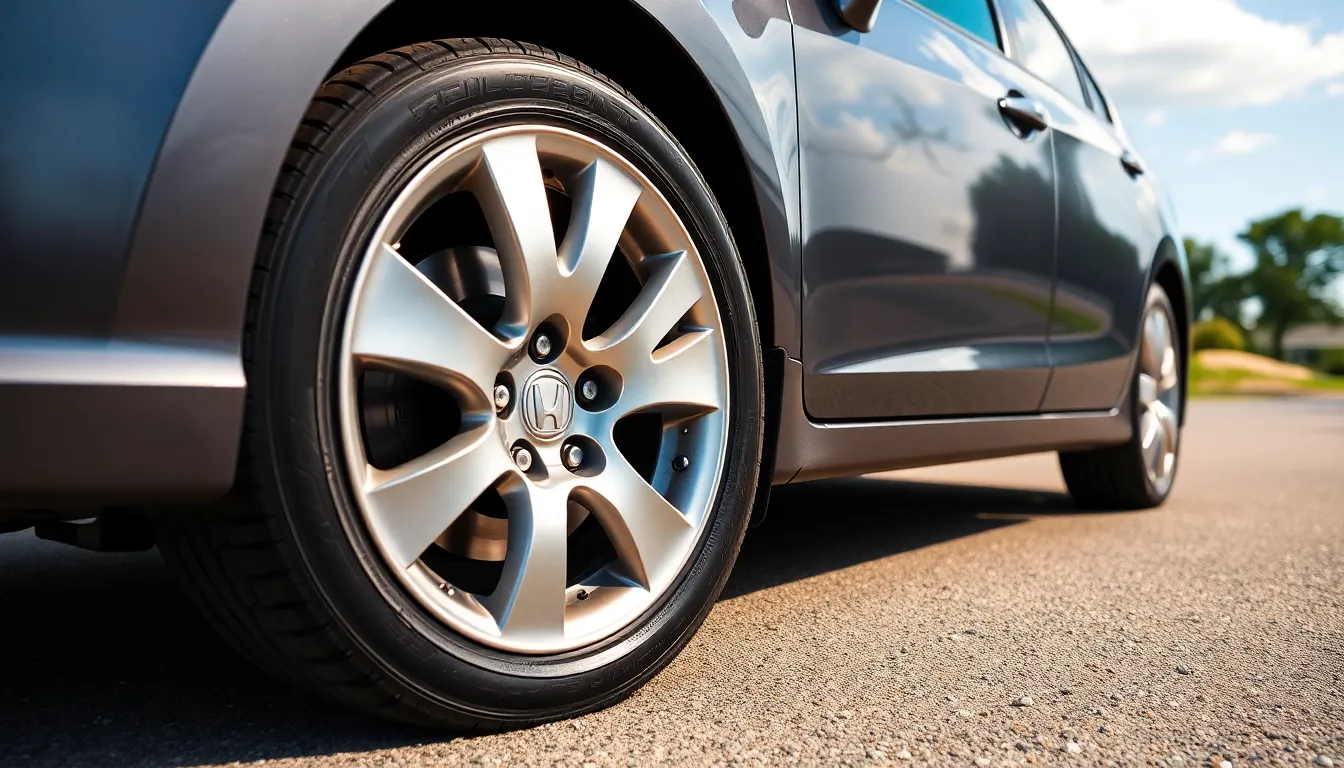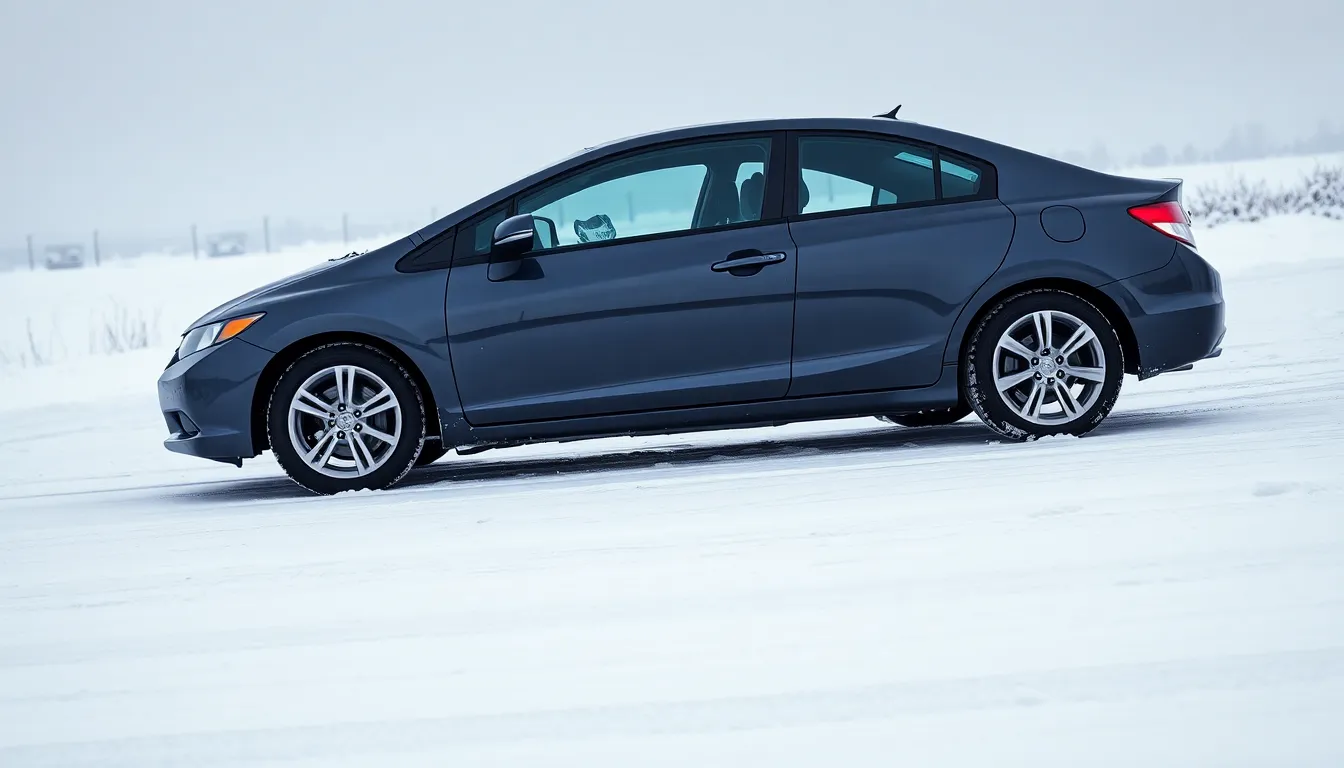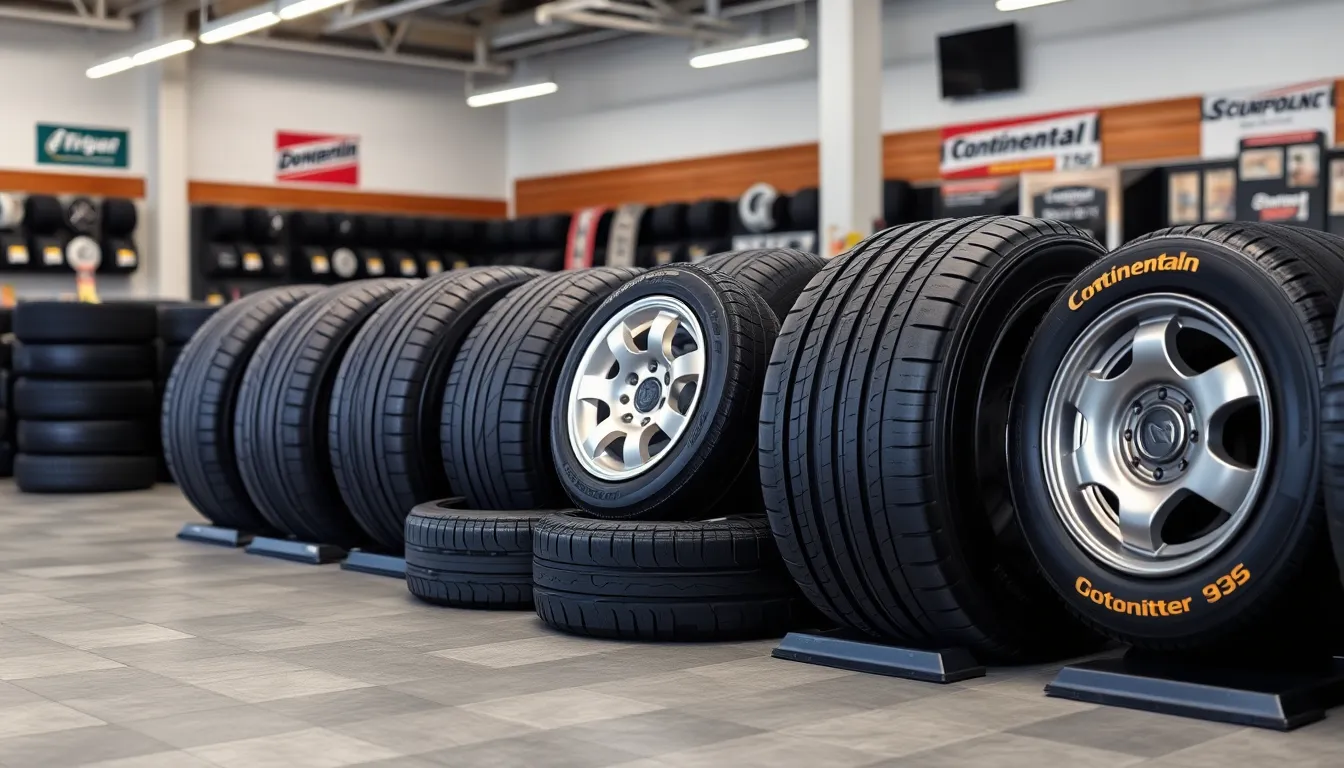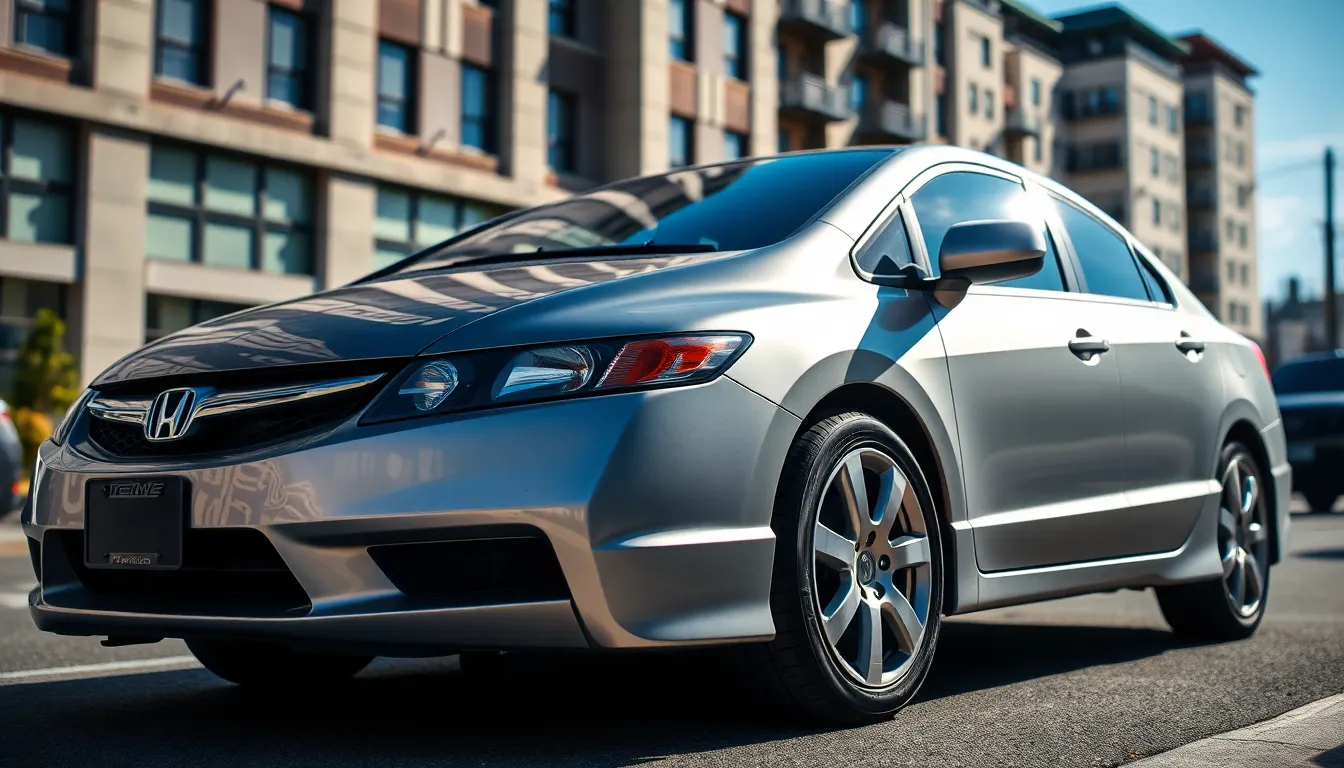Finding the right tire size for your 2009 Honda Civic can feel overwhelming with so many options available today. We understand that choosing the wrong tires affects everything from fuel economy to ride comfort and safety performance. That’s why we’ve compiled this comprehensive guide to help you navigate the tire selection process with confidence.
Your 2009 Civic came with exact tire sizes depending on the trim level and we’ll break down exactly what fits your vehicle. Whether you’re replacing worn tires or considering an upgrade we’ll show you the factory specifications plus compatible alternatives that maintain optimal performance.
Getting the tire size right matters more than you might think. The wrong size can throw off your speedometer readings impact your vehicle’s handling and even void warranty coverage. We’ll walk you through everything you need to know to make an well-informed choice that keeps your Civic running smoothly for years to come.
Understanding the 2009 Honda Civic Tire Size
Understanding your 2009 Honda Civic’s tire specifications starts with locating the tire information placard inside the driver’s door jamb. The factory-installed tire sizes vary depending on your exact trim level and wheel configuration.
Most 2009 Honda Civic models come equipped with 195/65R15 tires as the standard size. This configuration provides the optimal balance of fuel efficiency, ride comfort, and handling performance that Honda engineers designed for the vehicle.
Higher trim levels feature 205/55R16 tires, which offer enhanced cornering stability and a sportier appearance. These larger tires typically accompany 16-inch alloy wheels found on EX and Si models.
| Trim Level | Tire Size | Wheel Size | Load Index | Speed Rating |
|---|---|---|---|---|
| DX | 195/65R15 | 15 inches | 89 | H |
| LX | 195/65R15 | 15 inches | 89 | H |
| EX | 205/55R16 | 16 inches | 89 | H |
| Si | 215/45R17 | 17 inches | 87 | W |
Breaking down the tire size numbers reveals crucial information about your Civic’s requirements. The first number (195, 205, or 215) represents the tire width in millimeters. Following the slash, the aspect ratio (65, 55, or 45) indicates the sidewall height as a percentage of the tire width.
The letter “R” designates radial construction, which applies to virtually all modern passenger car tires. The final number specifies the wheel diameter in inches, matching your Civic’s rim size exactly.
Load index and speed ratings complete the tire specification picture. Load index 89 supports up to 1,279 pounds per tire, while speed rating H allows safe operation up to 130 mph. Si models with their W-rated tires can handle speeds up to 168 mph.
Checking your current tires reveals this information molded into the sidewall. Look for the complete size designation, typically located near the wheel rim area where it’s easily readable.
Temperature and seasonal considerations affect tire performance regardless of size. All-season tires work well for most driving conditions, while dedicated winter or summer tires optimize performance for exact weather patterns.
OEM Tire Specifications for Different Trim Levels

The 2009 Honda Civic offers distinct tire configurations across its trim levels to match performance expectations and price points. Each trim level features exact tire dimensions that optimize the vehicle’s handling characteristics and comfort levels.
DX and LX Models
DX models come equipped with 195/65R15 tires as the standard factory specification. These tires provide excellent fuel economy and ride comfort for daily commuting needs.
LX models typically feature 205/55R16 tires that offer improved road contact and enhanced steering response compared to the DX variant. The wider tire profile delivers better cornering stability while maintaining comfortable ride quality.
EX and EX-L Models
EX trim levels use 205/55R16 tires identical to the LX model specifications. This tire size balances performance characteristics with everyday usability for drivers seeking enhanced features.
EX-L models maintain the same 205/55R16 tire configuration as the standard EX trim. The consistent tire sizing across these upper trim levels ensures predictable handling dynamics and replacement cost uniformity.
Si Model
Si models feature larger tire dimensions to complement their sport-oriented suspension and performance capabilities. Most 2009 Civic Si variants come with 215/45R17 tires that maximize contact patch area for improved grip.
Additional tire options include 205/50R17 configurations depending on exact wheel packages and regional availability. These alternative sizes maintain the performance characteristics required for the Si’s enhanced driving dynamics.
Tire Size Breakdown and What the Numbers Mean

The 2009 Honda Civic features three distinct tire sizes across its trim levels, each designed for exact performance characteristics. DX trim models come equipped with 195/65R15 tires that prioritize fuel economy and comfort. EX and EX-L trims use 205/55R16 tires for enhanced handling and road contact. Optional 17-inch wheel packages on EX and EX-L models accommodate either 215/45R17 or 205/50R17 tires depending on the exact configuration.
Understanding Tire Size Numbers
Each tire size designation contains four critical measurements that determine fitment and performance. Using the standard DX tire size 195/65R15 as our example, we can decode these specifications systematically.
Width (195) represents the tire’s cross-sectional width measured in millimeters from sidewall to sidewall. This measurement directly affects the tire’s contact patch with the road surface.
Aspect Ratio (65) indicates the sidewall height as a percentage of the tire’s width. A 65 aspect ratio means the sidewall height equals 65% of the 195mm width, creating a taller sidewall that enhances ride comfort.
Construction Type (R) designates the tire’s internal structure, with “R” indicating radial construction where steel belts run perpendicular to the tread direction.
Wheel Diameter (15) specifies the rim size in inches that the tire fits, ensuring proper mounting and clearance within the wheel well.
| Trim Level | Tire Size | Width (mm) | Aspect Ratio | Wheel Diameter (inches) |
|---|---|---|---|---|
| DX | 195/65R15 | 195 | 65 | 15 |
| EX/EX-L | 205/55R16 | 205 | 55 | 16 |
| EX/EX-L (17″ wheels) | 215/45R17 | 215 | 45 | 17 |
| EX/EX-L (17″ alternative) | 205/50R17 | 205 | 50 | 17 |
Performance Impact of Size Variations
Wider tires like the 205mm and 215mm options provide increased road contact area, improving cornering stability and braking performance. Lower aspect ratios found in the 55 and 45 series tires create shorter sidewalls that reduce flex during aggressive driving maneuvers. Larger wheel diameters accommodate bigger brake components while maintaining overall tire diameter through reduced sidewall height.
Performance Considerations for Different Tire Sizes

Each tire size on the 2009 Honda Civic delivers distinct performance characteristics that directly affect your driving experience. We’ve analyzed how different sizes impact fuel economy and ride quality to help you understand what each option offers.
Fuel Economy Impact
195/65R15 tires deliver the best fuel economy among all 2009 Civic tire sizes due to their lower rolling resistance and lighter weight combination. These 15-inch tires reduce the overall unsprung weight of your vehicle, requiring less energy to maintain cruising speeds on highways and city streets.
205/55R16 tires create slightly higher rolling resistance compared to the smaller 15-inch option, resulting in a minor decrease in fuel economy. The wider contact patch increases friction with the road surface, causing your engine to work marginally harder during acceleration and maintaining speed.
215/45R17 and 205/50R17 tires on Si models produce the highest rolling resistance among factory tire sizes. These larger wheel and tire assemblies add important unsprung weight, which reduces fuel efficiency by approximately 1-2 mpg compared to the base 15-inch setup.
Handling and Ride Quality
15-inch tires provide the smoothest ride quality through their taller sidewalls that absorb road imperfections and cushion impacts from potholes. The increased sidewall height acts as a natural shock absorber, reducing vibrations transmitted to the cabin during daily driving conditions.
16-inch tires balance comfort and performance by offering improved steering response while maintaining reasonable ride comfort. The shorter sidewall compared to 15-inch tires enhances cornering stability and provides more precise feedback through the steering wheel during turns.
17-inch tires maximize handling performance through their low-profile design that minimizes sidewall flex during aggressive cornering. These tires deliver sharp turn-in response and superior lateral grip, though they transmit more road noise and impacts directly to passengers due to reduced sidewall cushioning.
Alternative Tire Size Options

Beyond the factory specifications for the 2009 Honda Civic, several alternative tire sizes offer enhanced performance and customization options. These alternatives maintain compatibility with your Civic’s suspension and speedometer systems while providing different driving characteristics.
Plus Sizing Opportunities
Plus sizing increases wheel diameter while reducing tire sidewall height to preserve the overall rolling diameter of your Civic’s tire and wheel combination. Moving from 15-inch to 16-inch wheels transforms the 195/65R15 size to 205/55R16, providing improved steering response and cornering stability. Upgrading from 16-inch to 17-inch wheels changes 205/55R16 tires to either 215/45R17 or 205/50R17 configurations.
The 205/50R17 alternative delivers a slightly taller sidewall than the 215/45R17 while maintaining similar width characteristics. This option provides better ride comfort compared to the lower profile 215/45R17 while still offering enhanced handling over smaller wheel sizes. Some Civic owners choose 225/45R17 tires for increased width and road contact, though this size typically appears on aftermarket or sport-tuned versions rather than OEM applications.
Most 2009 Civic owners find 17-inch wheels represent the practical upper limit for plus sizing without suspension modifications. Larger 18-inch wheels require lowered suspension or exact offset rims to prevent rubbing issues during turning or suspension compression.
Winter Tire Considerations
Winter tire selection for your 2009 Civic prioritizes traction and safety over performance characteristics found in summer or all-season alternatives. Choosing OEM or smaller wheel sizes like 15-inch or 16-inch options with taller sidewalls improves ride comfort and snow traction capability. The 195/65R15 and 205/55R16 sizes work exceptionally well for winter applications.
Narrower tire widths perform better in snow conditions by concentrating vehicle weight over a smaller contact patch, allowing tires to cut through snow and reach pavement beneath. Winter-rated tires display both M+S markings and the mountain snowflake symbol, indicating testing compliance for severe snow conditions. These specialized compounds remain flexible in freezing temperatures while providing superior grip on ice and packed snow surfaces.
Mounting winter tires on dedicated wheels simplifies seasonal changeovers and protects your primary wheel investment from road salt corrosion. Many Civic owners purchase inexpensive 15-inch steel wheels specifically for winter tire mounting, reducing overall seasonal tire costs while maintaining optimal winter performance.
Best Tire Brands and Models for the 2009 Honda Civic

Performance and reliability define the tire selection process for our 2009 Honda Civic. Michelin Defender 2 stands out as the top choice among enthusiasts and mechanics, delivering exceptional longevity alongside wet and dry performance capabilities in all-season configurations. Bridgestone Turanza QuietTrack offers superior comfort levels combined with all-season reliability that matches the Civic’s balanced driving characteristics.
Continental ControlContact Tour A/S prioritizes control and comfort features that complement the vehicle’s responsive handling dynamics. Goodyear Assurance WeatherReady provides all-weather traction and durability that extends beyond standard all-season performance parameters. Falken Pro G5 A/S delivers dependable performance and value positioning that appeals to budget-conscious owners seeking quality construction.
| Brand | Model | Key Features |
|---|---|---|
| Michelin | Defender 2 | Longevity, wet/dry performance, all-season versatility |
| Bridgestone | Turanza QuietTrack | Comfort, all-season reliability |
| Continental | ControlContact Tour A/S | Control, comfort |
| Goodyear | Assurance WeatherReady | All-weather traction, durability |
| Falken | Pro G5 A/S | Dependable performance, value |
Yokohama and Pirelli brands also maintain strong availability in compatible sizes for our Civic applications. Pricing ranges from $60 to $350+ per tire depending on the selected brand and size configuration. DX trim owners typically find the most affordable options in the 195/65R15 size category, while EX and EX-L trim owners investing in 205/55R16 tires encounter moderate price increases.
Sportier configurations utilizing 215/45R17 sizes command premium pricing due to their performance-oriented construction and lower production volumes. Brand reputation significantly impacts pricing structures, with Michelin and Continental typically commanding higher price points compared to Falken and other value-oriented manufacturers.
Installation and Maintenance Tips

Proper installation and ongoing maintenance of your 2009 Honda Civic tires ensures optimal performance and safety throughout their lifespan. We recommend starting with correct lug nut tightening techniques to prevent wheel damage and maintain secure mounting.
Lug Nut Tightening Procedures
Tightening lug nuts in a star pattern prevents uneven pressure distribution across the wheel hub. We apply this method by securing opposite lug nuts alternately rather than working in a circular sequence. This technique maintains proper wheel alignment and prevents warping during installation.
Tire Pressure Monitoring
Regular pressure checks optimize fuel efficiency and extend tire life for all 2009 Civic trim levels. We maintain pressure between 32 and 43 PSI depending on your exact tire size and vehicle load requirements. DX models with 195/65R15 tires typically operate at 32 PSI while EX and EX-L models with 205/55R16 tires require slightly higher pressures.
| Trim Level | Tire Size | Recommended PSI |
|---|---|---|
| DX | 195/65R15 | 32 PSI |
| EX/EX-L | 205/55R16 | 35-38 PSI |
| Coupe EX-L/LX | 215/45R17 | 38-43 PSI |
Rotation Schedule
Rotating tires every 5,000 to 8,000 miles ensures even tread wear across all four positions. We follow front to rear rotation patterns for directional tires and cross patterns for non-directional designs. This practice extends overall tire lifespan and maintains consistent handling characteristics.
Tread Depth Inspection
Regular tread depth monitoring prevents dangerous driving conditions and potential legal issues. We measure tread depth monthly using a penny test or digital gauge to ensure measurements stay above 2/32 inches. Replacing tires before reaching this minimum legal limit provides better traction and stopping performance.
Seasonal inspections become particularly important when switching between summer and winter tire configurations. We examine sidewalls for cracks, bulges, or embedded debris that could compromise tire integrity during temperature changes.
Conclusion
We’ve covered everything you need to know about selecting the perfect tires for your 2009 Honda Civic. From understanding the factory specifications across different trim levels to exploring performance upgrades and seasonal considerations your tire choice directly impacts your vehicle’s safety fuel economy and driving experience.
Remember that proper installation and regular maintenance are just as crucial as choosing the right size. Whether you’re sticking with OEM specifications or exploring plus-sizing options always prioritize quality brands and professional installation.
Your 2009 Civic deserves tires that match its reliability and performance capabilities. With the knowledge we’ve shared you’re now equipped to make an well-informed choice that’ll keep you driving safely and confidently for thousands of miles ahead.
Frequently Asked Questions
What tire size does a 2009 Honda Civic use?
Most 2009 Honda Civic models use 195/65R15 tires as standard equipment. However, tire size varies by trim level: DX models come with 195/65R15, LX and EX models feature 205/55R16, while the sporty Si model uses larger 215/45R17 tires for enhanced performance and handling.
Can I use different tire sizes on my 2009 Honda Civic?
While alternative sizes are possible, it’s crucial to maintain compatibility with your Civic’s suspension and speedometer systems. Plus sizing (larger wheels with lower-profile tires) can improve handling, but incorrect sizing may cause inaccurate speedometer readings, compromised handling, and potential warranty issues.
What do the numbers in tire sizes mean?
Tire size numbers indicate specific measurements: the first number (195) represents width in millimeters, the second (65) is the aspect ratio (sidewall height as percentage of width), “R” means radial construction, and the final number (15) indicates wheel diameter in inches.
Which tire brands are best for a 2009 Honda Civic?
Top recommended brands include Michelin Defender 2 for longevity, Bridgestone Turanza QuietTrack for comfort, Continental ControlContact Tour A/S for control, Goodyear Assurance WeatherReady for all-weather traction, and Falken Pro G5 A/S for value-conscious buyers seeking reliable performance.
What winter tire size should I use for my 2009 Honda Civic?
For winter driving, consider narrower tires like 195/65R15 or 205/55R16, depending on your trim level. Narrower tires provide better traction in snow by cutting through to the pavement. Mount winter tires on dedicated wheels to protect your primary wheels and simplify seasonal changes.
How often should I rotate tires on my 2009 Honda Civic?
Rotate your tires every 5,000 to 8,000 miles to ensure even tread wear and maximize tire lifespan. Follow a proper rotation pattern and check tire pressure regularly, as recommended PSI levels vary by trim and tire size for optimal performance and fuel economy.

